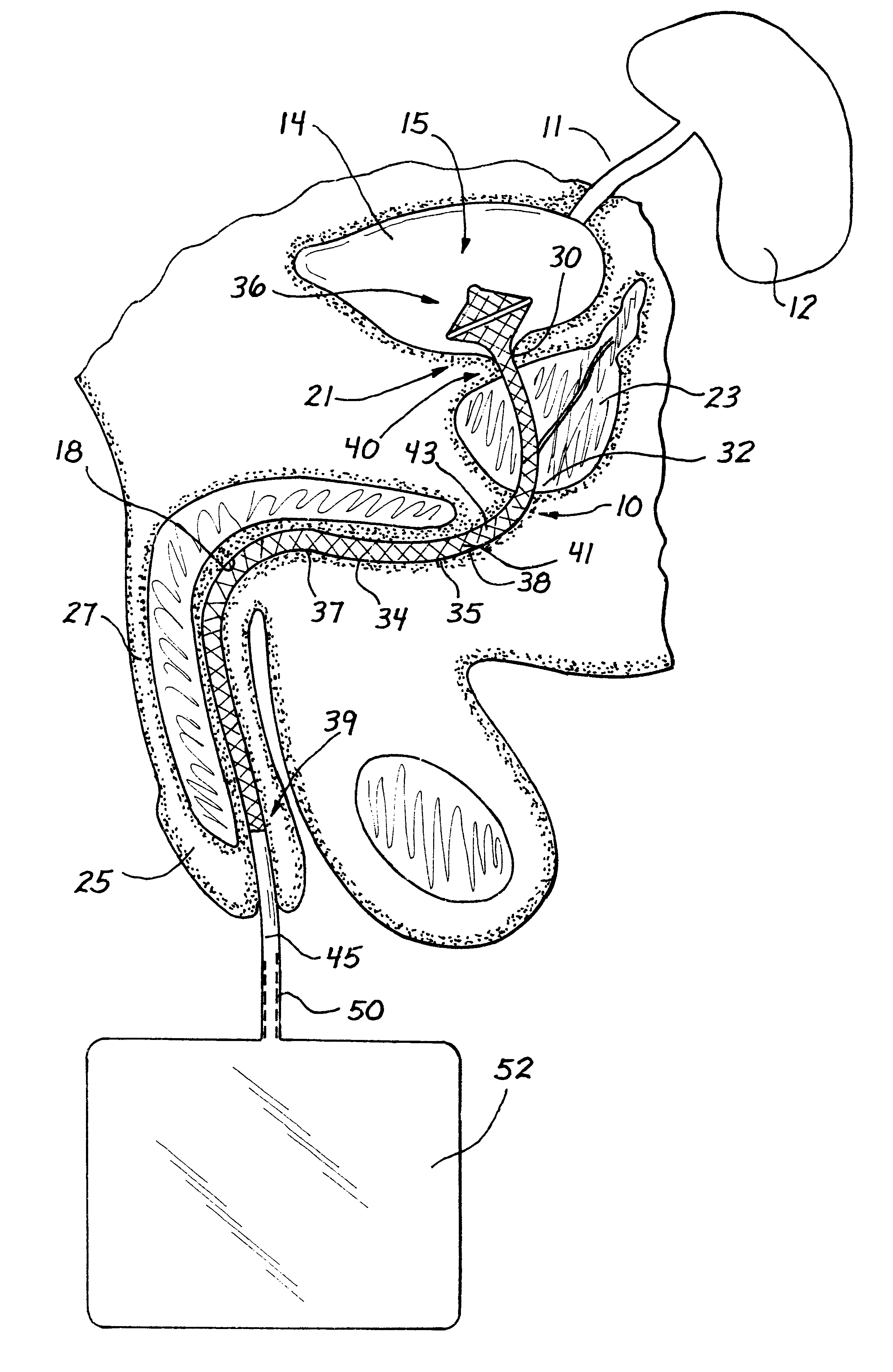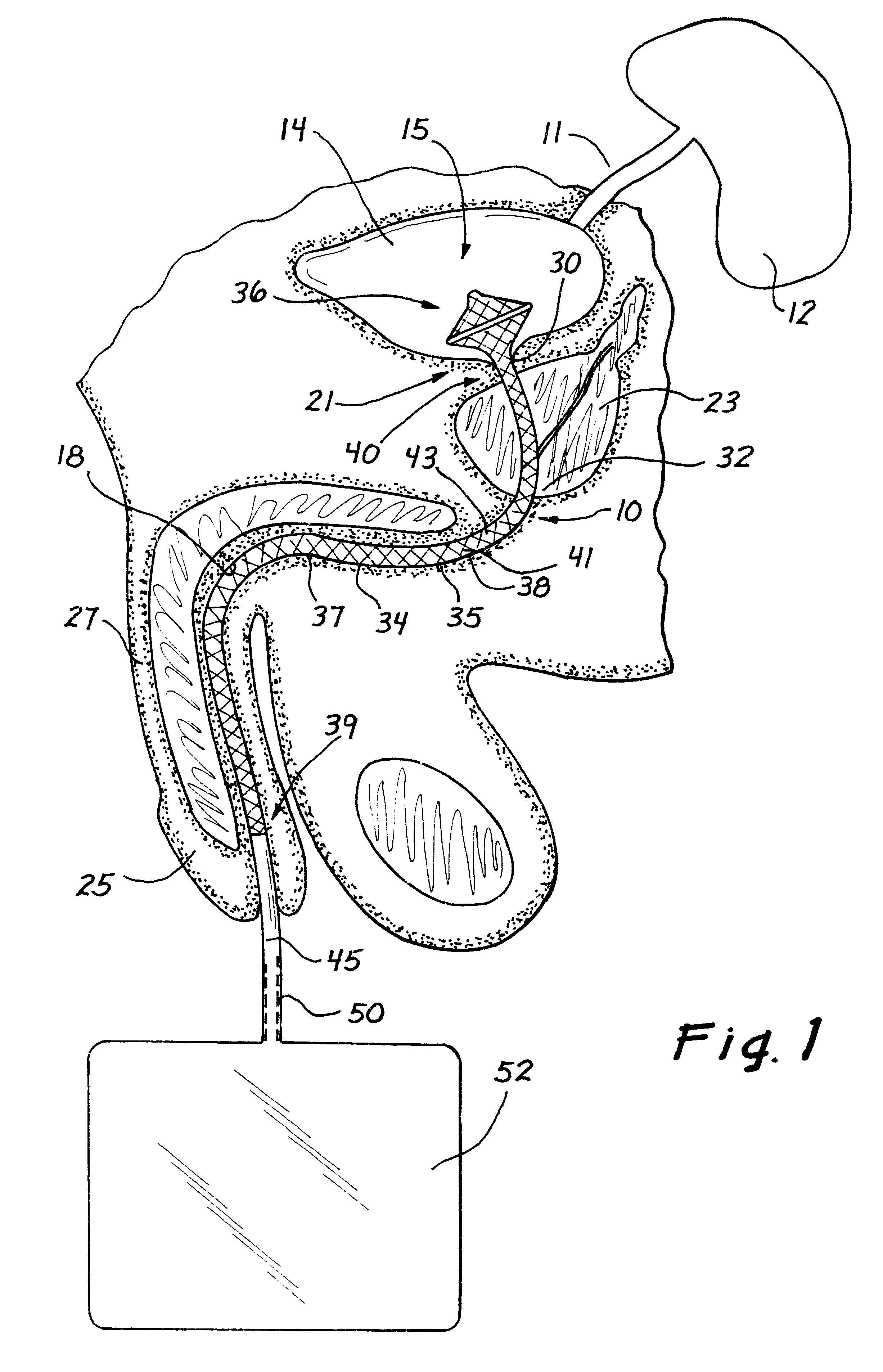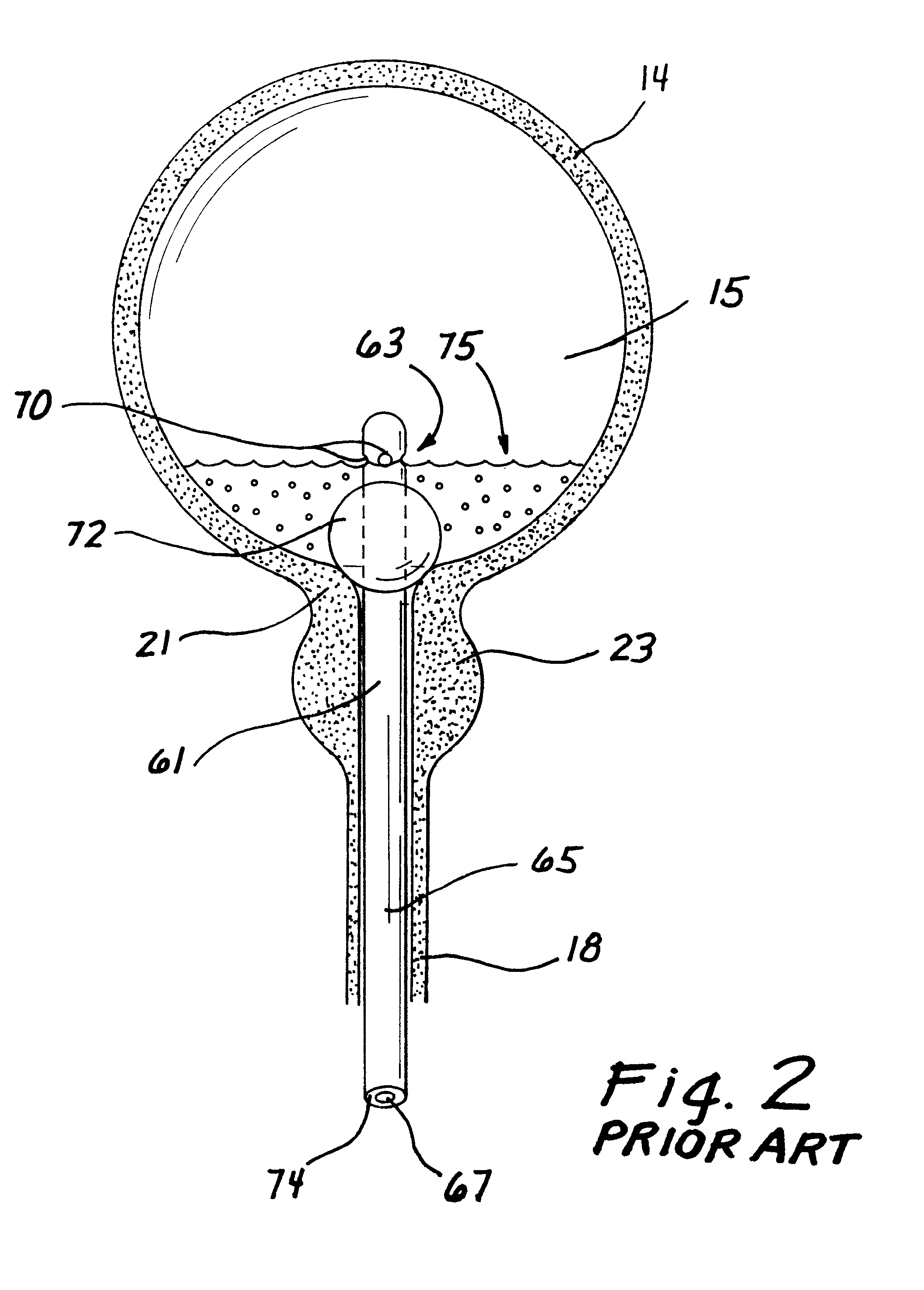Drainage catheter
a technology of draining catheter and catheter body, which is applied in the direction of wound draining, dilating device, surgery, etc., can solve the problems of inadvisable patient removal, difficult catheter inserting size, and inconvenient patient removal
- Summary
- Abstract
- Description
- Claims
- Application Information
AI Technical Summary
Problems solved by technology
Method used
Image
Examples
Embodiment Construction
A drainage catheter specifically adapted for use in the urinary tract of a patient is illustrated in FIG. 1 and designated by the reference numeral 10. In this view, the urinary tract includes a ureter 11 extending in fluid communication between a kidney 12 and a bladder 14 having a bladder cavity 15.
A urethra 18 begins at a bladder neck 21 and passes outwardly through a prostrate 23 and a meatus 25 of a penis 27. Sphincters 30 and 32 are disposed at opposite ends of the prostate 23. These sphincters include a secondary sphincter 30 disposed between the prostate 23 and the bladder neck 21, and a primary sphincter 32 disposed at the outward end of the prostate 23. Under normal conditions, the urethra 18 drains urine from the bladder 14 under the control of the sphincters 30 and 32, which open and close the urethra 18.
When the urethra 18 is compromised or otherwise blocked, urine cannot naturally drain from the bladder 14, even when the sphincters 30 and 32 are open. Under these condi...
PUM
 Login to View More
Login to View More Abstract
Description
Claims
Application Information
 Login to View More
Login to View More - R&D
- Intellectual Property
- Life Sciences
- Materials
- Tech Scout
- Unparalleled Data Quality
- Higher Quality Content
- 60% Fewer Hallucinations
Browse by: Latest US Patents, China's latest patents, Technical Efficacy Thesaurus, Application Domain, Technology Topic, Popular Technical Reports.
© 2025 PatSnap. All rights reserved.Legal|Privacy policy|Modern Slavery Act Transparency Statement|Sitemap|About US| Contact US: help@patsnap.com



